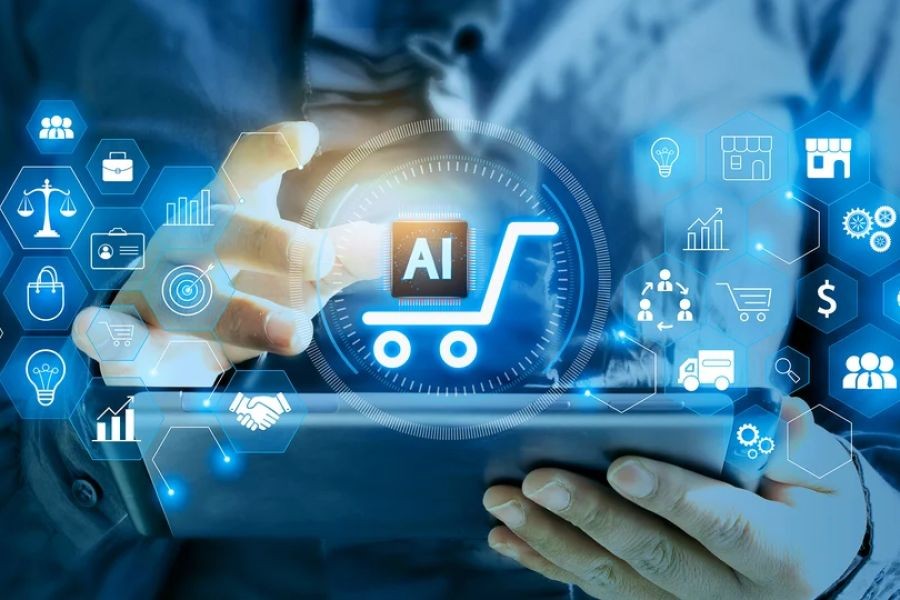In the ever-evolving landscape of retail, the battle between AI-powered e-commerce and traditional brick-and-mortar stores is intensifying. In Australia, this dynamic shift holds significant implications for the pharmaceutical industry and broader retail sectors. As we navigate through this transformation, it's crucial to understand the underlying forces driving these changes and what they mean for Australian businesses and consumers.
AI-Powered E-Commerce: Transforming Australian Retail
AI-powered e-commerce is revolutionizing how Australians shop. With consumer behavior shifting towards online platforms, businesses are leveraging AI to enhance customer experiences, predict trends, and streamline operations. According to the National Australia Bank (NAB), online retail sales in Australia grew by 18.3% in 2024, underscoring the increasing reliance on digital platforms.
AI technologies drive this growth by offering personalized shopping experiences, optimizing inventory management, and providing data-driven insights into consumer preferences. For instance, AI algorithms can analyze purchase histories and browsing patterns to recommend products tailored to individual customers, thereby boosting conversion rates and customer loyalty.
Case Study: The Chemist Warehouse's Digital Transformation
The Chemist Warehouse, a leading Australian pharmacy retailer, exemplifies the successful integration of AI in e-commerce. Faced with the challenge of maintaining market share amid growing online competition, the company embarked on a digital transformation journey.
- Problem: Declining foot traffic in physical stores and increasing demand for online services.
- Action: The Chemist Warehouse implemented AI-driven tools to enhance their online platform, offering personalized product recommendations and streamlining the checkout process.
- Result: The company reported a 25% increase in online sales within six months, with customer retention rates improving by 15%.
This case study highlights the potential of AI to transform traditional retail models, making them more competitive and consumer-friendly.
Brick-and-Mortar Retail: Resilience in the Face of Change
Contrary to the belief that brick-and-mortar stores are becoming obsolete, these physical spaces are evolving to meet new consumer expectations. In Australia, retailers are adopting innovative strategies to enhance in-store experiences and integrate digital technologies.
According to a report by the Australian Bureau of Statistics (ABS), 60% of Australian consumers still prefer the tactile experience of shopping in-store, especially for pharmaceutical products where in-person consultations and advice are valued. Retailers are leveraging this by offering services that cannot be replicated online, such as personalized consultations and community events.
The Pros and Cons of Each Model
Pros of AI-Powered E-Commerce:
- Scalability: Easily expands market reach beyond geographical boundaries.
- Data-Driven Insights: Provides detailed analytics for informed decision-making.
- Cost Efficiency: Reduces operational costs by automating processes.
Cons of AI-Powered E-Commerce:
- Privacy Concerns: Potential risks related to data security and consumer privacy.
- Dependence on Technology: Vulnerability to technical issues and cyberattacks.
Pros of Brick-and-Mortar Retail:
- Tangible Experience: Allows consumers to physically interact with products.
- Immediate Purchase: Offers instant gratification without waiting for delivery.
Cons of Brick-and-Mortar Retail:
- Limited Reach: Constrained by geographical location.
- Higher Overheads: Costs associated with physical space and staffing.
Future Trends and Predictions
The future of retail in Australia will likely see a hybrid model where AI-powered e-commerce and brick-and-mortar stores coexist. This integration will be driven by consumer demand for convenience, personalized experiences, and technological advancements.
According to a Deloitte report, by 2030, 70% of all retail transactions in Australia will involve some form of AI technology, whether through online platforms or in-store experiences. This trend underscores the need for retailers to adapt and innovate continually.
Conclusion
As the retail landscape evolves, businesses must embrace both AI-powered e-commerce and brick-and-mortar strategies to thrive. The key will be in understanding consumer needs, leveraging technology for personalization, and creating engaging in-store experiences. Australian retailers that successfully integrate these elements will be well-positioned to lead in this new era of commerce.
What are your thoughts on the future of retail in Australia? Share your insights below!
People Also Ask (FAQ)
- How does AI-powered e-commerce impact Australian retailers?AI-powered e-commerce enhances customer experiences through personalization and data insights, leading to improved sales and customer loyalty, as demonstrated by The Chemist Warehouse.
- What challenges do brick-and-mortar stores face in Australia?Brick-and-mortar stores face challenges such as higher overhead costs and limited geographical reach, but they offer unique in-person experiences valued by many consumers.
Related Search Queries
- AI in Australian retail
- Future of brick-and-mortar stores in Australia
- Online shopping trends in Australia
- Impact of AI on Australian businesses
- Pharmaceutical retail trends in Australia






























